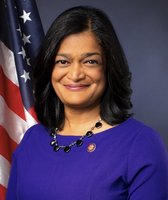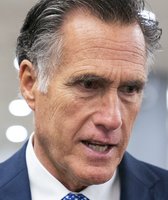Stand up for the facts!
Our only agenda is to publish the truth so you can be an informed participant in democracy.
We need your help.
I would like to contribute
President Donald Trump said that the suspect in an Oct. 31 terrorist attack in New York City came to the United States through a diversity visa program, which he wants to eliminate.
Authorities say Sayfullo Saipov, the suspected driver of the truck that killed at least eight people and injured about a dozen others in a bicycle path, entered the United States from Uzbekistan under the diversity visa program.
Trump tweeted on Nov. 1, "The terrorist came into our country through what is called the "Diversity Visa Lottery Program," a Chuck Schumer beauty. I want merit based." (We rated his Schumer claim Mostly False.)
"We are fighting hard for Merit Based immigration, no more Democrat Lottery Systems. We must get MUCH tougher (and smarter). @foxandfriends"
Sign up for PolitiFact texts
Trump also said during a Nov. 1 Cabinet meeting, "I am going to ask Congress to immediately initiate work to get rid of this program ... Diversity lottery. Sounds nice, it is not nice, it is not good. It hasn't been good and we have been against it."
There is at least one documented example of an individual who migrated through the diversity visa system and was later arrested on terrorism-related charges. But it’s not clear that the diversity lottery has historically been used as a strategic entry point for terrorists.
The goal of the diversity visa program is to diversify the United States’ immigrant population. The annual random lottery system began selecting applicants in 1995 from countries that had low immigration levels in the previous five years, with a cap of 55,000 immigrant visas a year to recipients who meet education or work requirements. The cap was lowered to 50,000 after Congress decided to allocate 5,000 visas to people eligible for the Nicaraguan and Central American Relief Act program.
Abdurasul Hasanovich Juraboev, an Uzbek citizen, in 2015 pleaded guilty to conspiring to provide material support to the terrorist organization ISIS, the New York Times reported in August 2015. Juraboev "had talked of violence on behalf of the Islamic State, like planting a bomb in Coney Island and attacking President (Barack) Obama," the Times reported.
Given the nature of the program, experts questioned how effective the program would be for terrorist entry.
"Because visas are allocated by lottery, it is hard to see how the system could be easily manipulated by those who want to do harm to the United States," added Kevin Johnson, an immigration law expert and dean of the University of California-Davis School of Law.
The chances of winning the visa lottery typically range somewhere between 200-to-1 and 400-to-1, said Stephen H. Legomsky, an emeritus professor at the Washington University School of Law in St. Louis who served as chief counsel of U.S. Citizenship and Immigration Services from 2011 to 2013 during the Obama administration.
The suspect in the New York City attack might have self-radicalized once in the United States, rather than coming into the country with the intention of committing an attack.
"He obviously did not plan a simple attack like this over the last seven-plus years," said Alex Nowrasteh, an immigration expert at the libertarian Cato Institute. "Better vetting won’t stop somebody who decides to become a terrorist years after he arrived."
Immigrants who come via the diversity visa program are subject to background checks and vetting.
"It’s not like you win the lottery and walk into the United States. You are subject to the same vetting procedures," said Anna O. Law, Herbert Kurz chair of Constitutional Rights at CUNY Brooklyn College.
Homegrown terrorism is a significant threat in the United States.
In August, we reported that of 418 individuals tracked by New America who were accused of jihadist terrorism-related crimes in the United States since 9/11, 85 percent were either U.S. citizens or U.S. legal residents, and about half were born American citizens.
A recent government report also shows that from Sept. 12, 2001, to Dec. 31, 2016, there were 85 deadly attacks in the United States by violent extremists. Most of the attacks were carried out by far-right violent extremists. But more people died during attacks connected with Islamic jihadist extremists.
Our Sources
Twitter, @realdonaldtrump tweet, tweet, Nov. 1, 2017
PolitiFact, A look at the data on domestic terrorism and who’s behind it, Aug. 16, 2017
Cato Institute, The Halloween Terror Attack in New York: The Threat from Foreign-Born Terrorists, Oct. 31, 2017
Counterextremism.com, Abdurasul Hasanovich Juraboev
Phone interview, Anna O. Law, Herbert Kurz Chair of Constitutional Rights at CUNY Brooklyn College, Nov. 1, 2017
Email interview, Kevin Johnson, an immigration law expert and dean of the University of California-Davis School of Law, Nov. 1, 2017
Email interview, Stephen H. Legomsky, John S. Lehmann University Professor Emeritus at the Washington University School of Law in St. Louis, Nov. 1, 2017
Email interview, Alex Nowrasteh, an immigration expert at the libertarian Cato Institute, Nov. 1, 2017
Email interview, Kit Johnson, associate professor of law at the University of North Dakota School of Law, Nov. 1, 2017
CNN, Trump demands Congress terminate diversity immigration lottery, Nov. 1, 2017










































